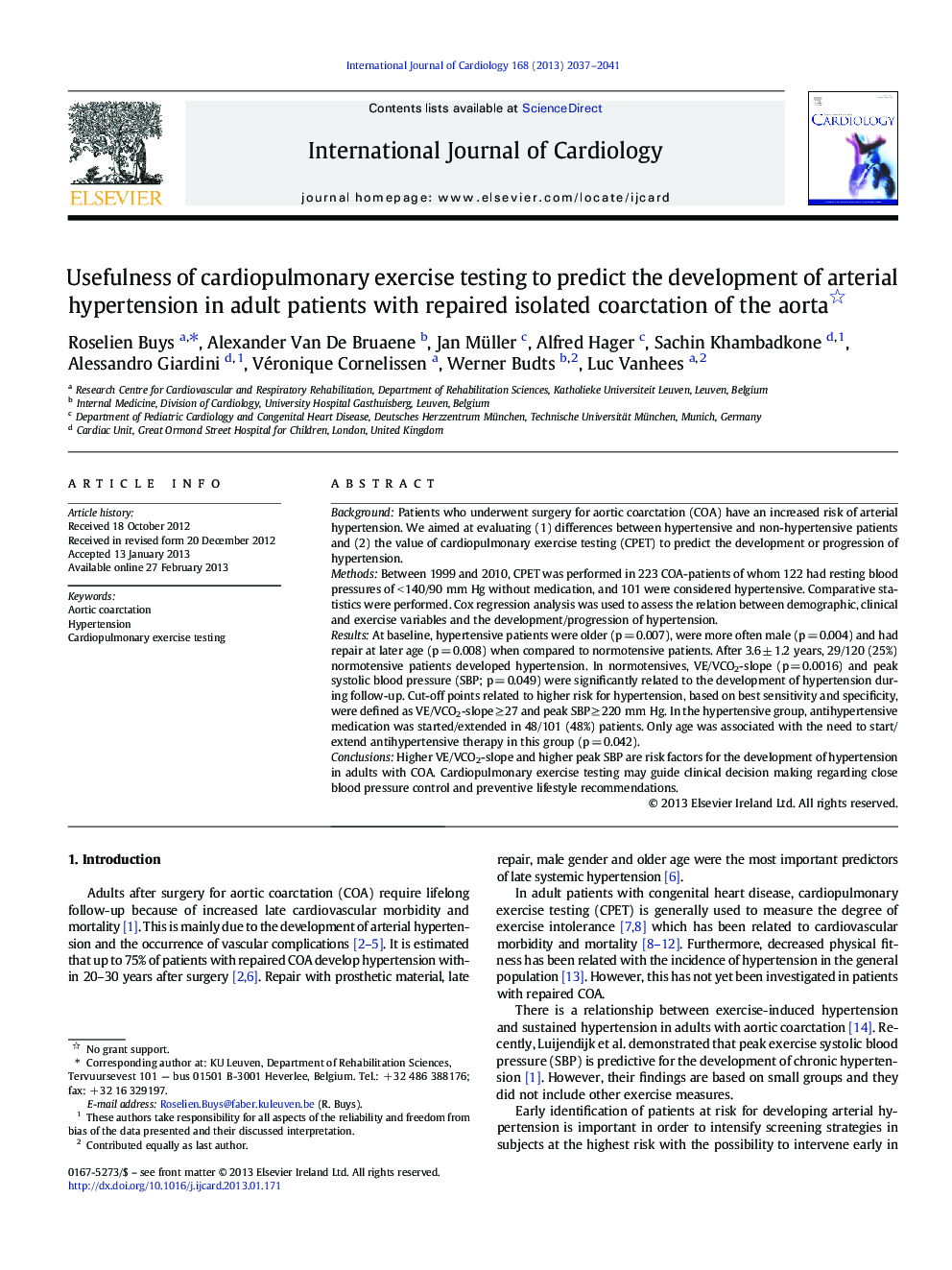| Article ID | Journal | Published Year | Pages | File Type |
|---|---|---|---|---|
| 5976182 | International Journal of Cardiology | 2013 | 5 Pages |
BackgroundPatients who underwent surgery for aortic coarctation (COA) have an increased risk of arterial hypertension. We aimed at evaluating (1) differences between hypertensive and non-hypertensive patients and (2) the value of cardiopulmonary exercise testing (CPET) to predict the development or progression of hypertension.MethodsBetween 1999 and 2010, CPET was performed in 223 COA-patients of whom 122 had resting blood pressures of < 140/90 mm Hg without medication, and 101 were considered hypertensive. Comparative statistics were performed. Cox regression analysis was used to assess the relation between demographic, clinical and exercise variables and the development/progression of hypertension.ResultsAt baseline, hypertensive patients were older (p = 0.007), were more often male (p = 0.004) and had repair at later age (p = 0.008) when compared to normotensive patients. After 3.6 ± 1.2 years, 29/120 (25%) normotensive patients developed hypertension. In normotensives, VE/VCO2-slope (p = 0.0016) and peak systolic blood pressure (SBP; p = 0.049) were significantly related to the development of hypertension during follow-up. Cut-off points related to higher risk for hypertension, based on best sensitivity and specificity, were defined as VE/VCO2-slope â¥Â 27 and peak SBP â¥Â 220 mm Hg. In the hypertensive group, antihypertensive medication was started/extended in 48/101 (48%) patients. Only age was associated with the need to start/extend antihypertensive therapy in this group (p = 0.042).ConclusionsHigher VE/VCO2-slope and higher peak SBP are risk factors for the development of hypertension in adults with COA. Cardiopulmonary exercise testing may guide clinical decision making regarding close blood pressure control and preventive lifestyle recommendations.
